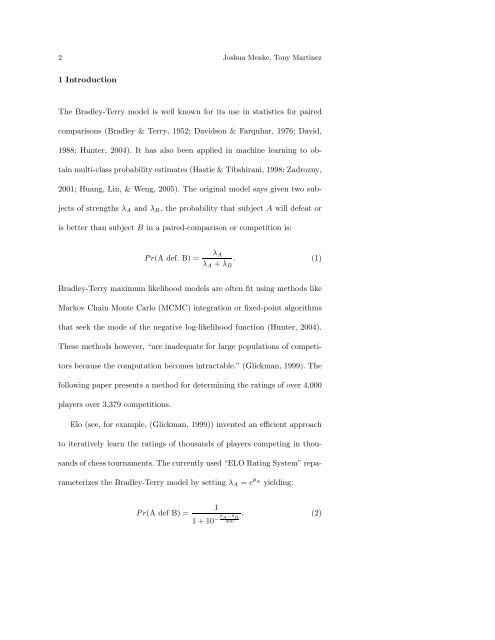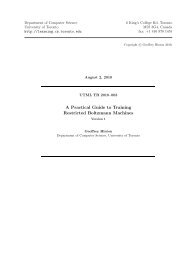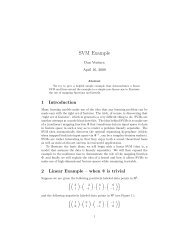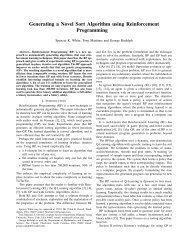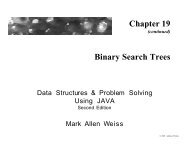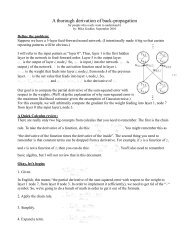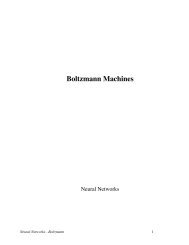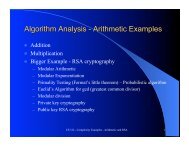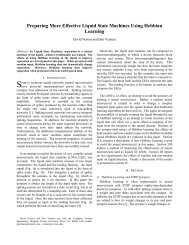A Bradley-Terry Artificial Neural Network Model for Individual ...
A Bradley-Terry Artificial Neural Network Model for Individual ...
A Bradley-Terry Artificial Neural Network Model for Individual ...
Create successful ePaper yourself
Turn your PDF publications into a flip-book with our unique Google optimized e-Paper software.
2 Joshua Menke, Tony Martinez<br />
1 Introduction<br />
The <strong>Bradley</strong>-<strong>Terry</strong> model is well known <strong>for</strong> its use in statistics <strong>for</strong> paired<br />
comparisons (<strong>Bradley</strong> & <strong>Terry</strong>, 1952; Davidson & Farquhar, 1976; David,<br />
1988; Hunter, 2004). It has also been applied in machine learning to obtain<br />
multi-class probability estimates (Hastie & Tibshirani, 1998; Zadrozny,<br />
2001; Huang, Lin, & Weng, 2005). The original model says given two subjects<br />
of strengths λ A and λ B , the probability that subject A will defeat or<br />
is better than subject B in a paired-comparison or competition is:<br />
Pr(A def. B) =<br />
λ A<br />
λ A + λ B<br />
. (1)<br />
<strong>Bradley</strong>-<strong>Terry</strong> maximum likelihood models are often fit using methods like<br />
Markov Chain Monte Carlo (MCMC) integration or fixed-point algorithms<br />
that seek the mode of the negative log-likelihood function (Hunter, 2004).<br />
These methods however, “are inadequate <strong>for</strong> large populations of competitors<br />
because the computation becomes intractable.” (Glickman, 1999). The<br />
following paper presents a method <strong>for</strong> determining the ratings of over 4,000<br />
players over 3,379 competitions.<br />
Elo (see, <strong>for</strong> example, (Glickman, 1999)) invented an efficient approach<br />
to iteratively learn the ratings of thousands of players competing in thousands<br />
of chess tournaments. The currently used “ELO Rating System” reparameterizes<br />
the <strong>Bradley</strong>-<strong>Terry</strong> model by setting λ A = e θA yielding:<br />
Pr(A def B) =<br />
1<br />
1 + 10 − θ A −θ B<br />
400<br />
. (2)


